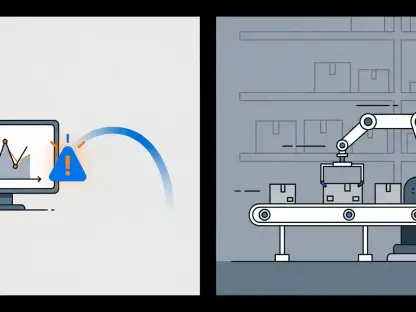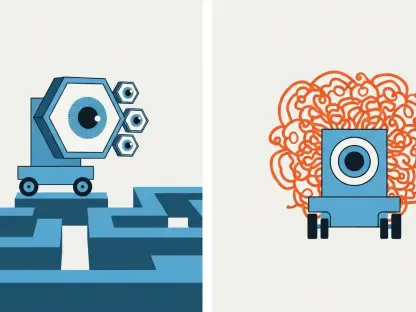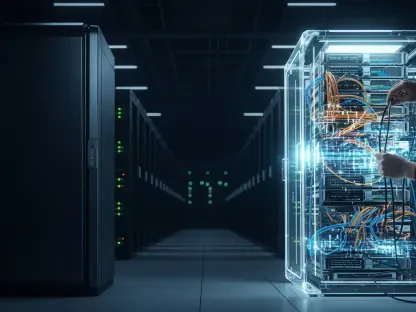Artificial intelligence (AI) is rapidly becoming a transformative force in the U.S. education system, offering unprecedented opportunities to enhance learning while raising critical questions about fairness, privacy, and implementation. As federal agencies advocate for its integration into schools through grants and policy guidance, the potential for AI to revolutionize areas like personalized tutoring and curriculum design is undeniable. Yet, the complexities of adopting such technology in a diverse and often under-resourced educational landscape cannot be overlooked. From ethical concerns to operational challenges, the journey to embed AI into education policy is fraught with both promise and peril. This exploration delves into how AI is influencing federal directives, shaping debates on equity, and intersecting with broader policy shifts, all while school districts grapple with practical hurdles. The balance between innovation and regulation remains a central theme as the nation seeks to prepare students for a tech-driven future without leaving anyone behind.
The Push for AI in Education
Federal Guidance and Funding for AI Integration
The U.S. Department of Education has taken a bold step forward with a “Dear Colleague” letter from Secretary Linda McMahon, outlining how federal grants can support AI integration in schools for purposes like curriculum enhancement, tutoring, and career advising. This directive emphasizes that AI initiatives must be educator-led, ensuring that teachers remain at the core of decision-making. Additionally, the guidance prioritizes ethical standards, insisting on transparency in how AI tools are deployed and strict adherence to federal data privacy laws. Accessibility is another key pillar, with a mandate to ensure that students with disabilities can benefit equally from these technologies. This framework signals a federal commitment to harnessing AI’s potential to modernize education, but it also underscores the importance of oversight to prevent unintended consequences. As school districts begin to explore these opportunities, the challenge lies in aligning innovative tools with the practical realities of classroom environments and diverse student needs.
Beyond the initial guidance, the federal push for AI in education also raises questions about long-term funding and scalability. While grants provide a starting point, sustained investment is necessary to train educators and update infrastructure to support AI tools effectively. The Department of Education’s principles aim to create a balance between innovation and responsibility, but the success of these efforts depends on how well schools can adapt to rapid technological changes. Many districts, especially in rural or underfunded areas, may struggle with the digital divide, lacking the necessary hardware or connectivity to implement AI at scale. Furthermore, the emphasis on data privacy highlights a growing concern about protecting sensitive student information in an era of increasing cyber threats. As AI becomes more embedded in educational practices, continuous evaluation of its impact on student outcomes and teacher workload will be essential to ensure that the technology serves as a help rather than a hindrance.
Balancing Innovation with Equity
One of the most pressing challenges in integrating AI into education is ensuring that it does not exacerbate existing disparities among students. Federal guidelines stress the importance of making AI tools accessible to all, particularly for students with disabilities who may require specialized adaptations. This focus on inclusivity aims to prevent a scenario where only well-resourced schools benefit from advanced technology, leaving others further behind. Policymakers are tasked with creating frameworks that prioritize equitable distribution of AI resources, ensuring that rural and low-income districts are not sidelined. Transparency in how AI algorithms function is also critical, as opaque systems could unintentionally reinforce biases in educational content or assessment. The goal is to personalize learning experiences without compromising fairness, a delicate balance that requires constant monitoring and adjustment as technology evolves within school systems.
Equally important is the need to address potential misuse of AI that could widen educational gaps. If not carefully managed, AI tools might favor certain demographics over others due to inherent biases in data or design, undermining the very equity they are meant to promote. For instance, automated tutoring systems must be tested rigorously to ensure they cater to diverse learning styles and cultural contexts. Additionally, schools must invest in professional development to equip educators with the skills to use AI effectively, preventing a reliance on technology that could diminish the human element of teaching. Community engagement plays a vital role as well, as parents and local stakeholders need assurance that AI enhances rather than replaces traditional educational values. As these tools become more prevalent, ongoing dialogue between educators, technologists, and policymakers will be crucial to refine their application and ensure they serve as a bridge rather than a barrier to equal opportunity.
Policy Shifts and Broader Implications
Federal Funding and Autonomy Debates
The Senate Appropriations Committee’s bipartisan proposal to allocate $79 billion to the Education Department for fiscal year 2026 represents a significant effort to safeguard essential programs like Title I and special education amid broader policy debates. This funding aims to counter attempts to shift such programs outside federal oversight, ensuring that resources remain focused on addressing systemic inequities. Within this context, AI’s role as a tool for enhancing educational outcomes is gaining traction, with funds potentially supporting tech-driven innovations. However, the push for waivers from the Elementary and Secondary Education Act (ESEA) requirements introduces a layer of complexity. These waivers, intended to reduce bureaucratic constraints, grant states more flexibility in spending federal dollars, including on AI initiatives. The tension between federal control and state autonomy remains a critical issue, as policymakers debate how much oversight is needed to maintain accountability while allowing for localized innovation.
This funding and policy landscape also reflects deeper questions about how AI can fit into a system already strained by competing priorities. States seeking ESEA waivers may prioritize AI projects that align with local needs, such as addressing teacher shortages through virtual training platforms. Yet, without uniform standards, there’s a risk of inconsistent implementation that could undermine national goals for educational equity. The substantial federal budget proposal signals a commitment to preserving core programs, but it also places pressure on districts to demonstrate measurable results from tech investments. As AI tools are piloted, their ability to improve student performance in underfunded schools will be a key metric for justifying further funding. Navigating this balance between flexibility and responsibility will shape how effectively AI can support broader educational reforms, especially as states and the federal government continue to define their respective roles in policy-making.
Legal and Cultural Challenges
Recent guidance from the U.S. Department of Justice limiting certain Diversity, Equity, and Inclusion (DEI) practices in schools has sparked a national conversation about cultural sensitivity in education, with indirect implications for AI integration. The memo from Attorney General Pamela Bondi highlights legal risks tied to hiring practices and student programs that target specific demographics, urging districts to tread carefully. While AI itself is often seen as a neutral tool, its application in areas like student assessment or resource allocation could intersect with these legal concerns if algorithms inadvertently reflect cultural biases. This guidance underscores a broader debate about how educational policies balance inclusivity with legal compliance, challenging districts to ensure that technology supports rather than complicates these goals. The intersection of law and innovation requires careful consideration to avoid unintended consequences in school environments.
Moreover, the cultural implications of AI in education extend beyond legal frameworks to how communities perceive and trust these tools. If AI systems are used for tasks like grading or behavioral analysis, transparency becomes paramount to prevent perceptions of unfairness, especially in diverse districts where historical inequities linger. The DOJ’s stance on DEI practices serves as a reminder that technology must be implemented with cultural awareness, ensuring it does not alienate or disadvantage any group. School leaders must also navigate public skepticism about data privacy and algorithmic decision-making, which could be amplified by broader policy debates on equity. Building trust through clear communication about how AI operates and safeguards student rights will be essential. As education policy evolves, aligning technological advancements with cultural and legal expectations remains a complex but necessary endeavor to foster an inclusive learning environment.
Emerging Trends and Challenges
Privatization and Public School Pressures
The dramatic 40% increase in students opting for universal private school choice programs, rising to 805,000 in the current academic year, poses significant challenges for public education systems already facing declining enrollment and funding constraints. This shift, fueled by both state and federal initiatives like the “One Big, Beautiful Bill,” raises questions about whether AI can help public schools remain competitive by improving educational outcomes. Technology offers potential solutions, such as personalized learning platforms that cater to individual student needs, which could attract families back to public systems. However, the risk of unequal access to AI tools looms large, as private institutions with greater resources might adopt advanced technologies faster, further deepening the divide. Policymakers must grapple with how to ensure that public schools, often serving the most vulnerable populations, are not left behind in the rush toward privatization and technological advancement.
Compounding this issue is the uncertainty of how AI will be distributed across educational sectors in the coming years. If public schools struggle to secure funding for cutting-edge tools, the gap between public and private education could widen, exacerbating inequities in student preparedness for future careers. Initiatives to integrate AI must therefore prioritize under-resourced districts, ensuring that federal grants and state policies focus on leveling the playing field. Additionally, public schools could leverage AI for operational efficiencies, such as predictive analytics to manage enrollment declines or optimize resource allocation. Yet, success depends on building partnerships between government, tech providers, and educators to create sustainable models for AI adoption. As privatization trends continue, the role of AI in maintaining public education’s relevance will be a defining factor in shaping equitable access to quality learning opportunities for all students.
Operational Realities in School Districts
School districts across the nation are confronting tough operational challenges, from aging infrastructure necessitating closures to severe teacher shortages, particularly evident in states like Texas where uncertified teachers now make up 12% of the workforce. AI could offer innovative solutions, such as virtual training programs to upskill educators or data-driven tools to streamline administrative tasks like scheduling and resource management. However, integrating technology into these high-pressure environments requires overcoming significant hurdles, including budget limitations and resistance to change. Community backlash against school closures, often tied to cultural or historical significance, further complicates decisions, making it essential for administrators to balance fiscal responsibility with local sentiment. The potential for AI to support operational efficiency is clear, but its implementation must be carefully tailored to address the unique needs of each district without alienating stakeholders.
Teacher certification issues add another layer of complexity, with states like Texas aiming to phase out uncertified educators in core subjects by 2029-30. AI-driven platforms could play a role in bridging this gap by offering simulated classroom experiences or personalized professional development, helping teachers meet certification standards more efficiently. Yet, the digital divide remains a barrier, as not all districts have the infrastructure to support such tools, potentially leaving rural or low-income areas at a disadvantage. Moreover, the emotional and relational aspects of teaching cannot be fully replicated by technology, underscoring the need for AI to complement rather than replace human educators. As districts navigate these operational realities, fostering dialogue with communities about the benefits and limitations of AI will be crucial. Only through strategic planning and inclusive decision-making can technology help address systemic challenges without creating new ones in its wake.
Reflecting on a Path Forward
Looking back, the integration of AI into U.S. education policy revealed a landscape marked by both groundbreaking potential and significant hurdles that demanded careful navigation. Federal guidance and funding initiatives laid a foundation for innovation, while debates over equity and autonomy highlighted the complexities of implementing technology in diverse school systems. The rise of privatization and persistent operational struggles in districts underscored the urgency of ensuring AI served as a tool for inclusivity rather than division. Moving forward, the focus must shift to actionable strategies, such as targeted investments in under-resourced schools to close the digital divide and robust training programs for educators to lead AI adoption. Strengthening partnerships between policymakers, technologists, and communities will be vital to refine these tools and address unforeseen challenges. Ultimately, the legacy of this era will depend on a commitment to harnessing AI’s capabilities to build a more equitable and effective educational system for future generations.









